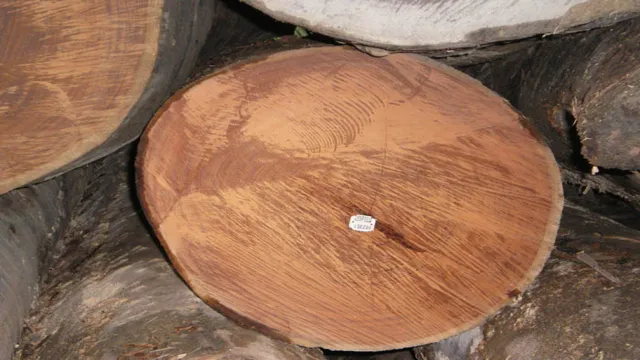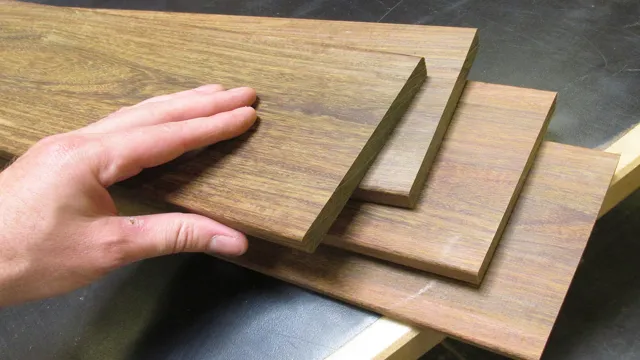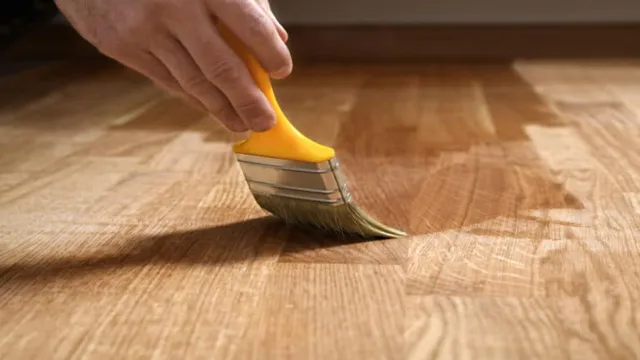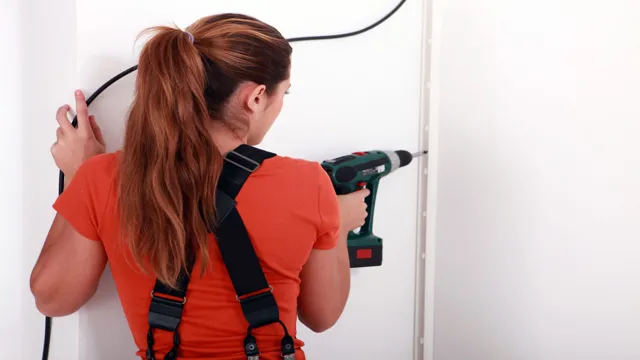How to Cut Ipe Wood: Tips and Techniques for Precision Cuts

Ipe wood is a beautiful and durable hardwood that is highly sought after for outdoor decks, furniture, and siding. However, it can be quite challenging to cut due to its density and hardness. If you’re not careful, you may end up ruining your saw blade or even injuring yourself.
But don’t worry, in this blog, we’ll show you the best methods for cutting ipe wood like a pro. First, we’ll cover the tools you’ll need, including the best saw blades for cutting ipe wood. Then, we’ll walk you through the step-by-step process for making precise cuts, whether you’re using a miter saw, circular saw, or even a handsaw.
We’ll also provide tips for keeping your saw blades sharp and avoiding common mistakes. If you’re planning a DIY project with ipe wood, such as a deck or pergola, it’s essential to know how to cut it properly. Not only will it save you time and money, but it will also ensure that your project looks professional and lasts for years to come.
So, let’s get started and learn all about cutting ipe wood!
Introduction
Cutting ipe wood can be a challenging task, as it is one of the hardest and densest woods out there. It’s important to use the right tools for the job and take safety precautions to avoid injury. One tool you’ll definitely need is a saw blade with carbide teeth, as regular blades can quickly become dull or break.
Additionally, using a dust mask and protective glasses is important to avoid inhaling sawdust or getting debris in your eyes. When cutting ipe wood, it’s also important to go slow and use even pressure to avoid splintering or cracking the wood. With the right tools and precautions, you can successfully cut ipe wood for your woodworking projects.
What is Ipe Wood?
“Ipe wood” Ipe wood is a type of hardwood that originates from South America and is coveted for its durability and resistance to wear and tear. Known by its scientific name, Tabebuia spp, ipe wood is commonly used for exterior construction, including decking, siding, and fences. Its natural resistance to rot, decay, and insect infestation makes it an ideal option for outdoor applications.
Additionally, its attractive deep brown color and natural grain patterns make ipe wood a popular choice for high-end projects. While it can be more expensive than other wood types, the long-lasting and low-maintenance nature of ipe wood makes it a worthwhile investment for those seeking long-term durability and beauty. So, whether you’re building a new deck or considering a fence replacement, ipe wood is definitely worth considering for your outdoor project.

Why is It Important to Cut It The Right Way?
Cutting things the right way can make all the difference in how well they serve their purpose. Whether it’s cutting food for a recipe or trimming a garden hedge, the precision and technique used can greatly impact the end result. But the importance of cutting it the right way goes beyond just aesthetics.
It can also affect the safety and effectiveness of the object being cut. By taking the time to properly cut things, we can ensure that they function as intended and are safe to use. So the next time you reach for a pair of scissors or a kitchen knife, remember that taking the extra time to cut it the right way can make all the difference.
Tools You Will Need
If you’re wondering how to cut ipe wood, there are a few essential tools you’ll need to get the job done right. First and foremost, make sure you have a sharp saw blade capable of cutting through hardwoods like ipe. Circular saws, miter saws, or chop saws all work well for this purpose.
You’ll also need a measuring tape, a pencil, and a speed square or angle finder to ensure accurate cuts and angles. To keep the wood steady during cutting and prevent chipping or splitting, consider using clamps or a steady-hand device. It’s important to note that ipe wood is incredibly dense and hard, so you may want to wear protective equipment like gloves, earplugs, and safety glasses to keep yourself safe on the job.
With the right tools and precautions, cutting ipe wood should be a breeze.
Saw Blades
Saw Blades When it comes to cutting materials with precision and accuracy, saw blades are a must-have tool. However, not all saw blades are created equal, and using the wrong blade for the job can result in poor cuts, damaged material, and even injury. Therefore, it’s important to have a good understanding of the various saw blades available and their specific functions.
Some tools you’ll need include a jigsaw blade, circular saw blade, reciprocating saw blade, and band saw blade. Each blade has its unique features and is designed for specific materials or tasks. For instance, a jigsaw blade is ideal for making curved cuts, while a circular saw blade is perfect for cutting straight lines.
Therefore, it’s vital to choose the right blade for the job to achieve the best results. With the right tools at hand, you can make your sawing tasks more efficient, effortless, and satisfactory.
Work Gloves
When working with tools such as hammers, screwdrivers, or power tools, it is important to protect your hands with work gloves. But not all gloves are created equal. You need to choose the right ones for the job to ensure maximum protection and comfort.
The first thing you need to consider when choosing work gloves is the material. Leather gloves offer excellent durability and protection against cuts and abrasions, while synthetic gloves are more lightweight and offer better dexterity. Another important factor is the type of grip.
Gloves with a textured surface provide a better grip, while those with a smooth surface allow for more precision. Don’t forget about comfort either. Gloves that are too tight or too loose can cause discomfort and reduce your dexterity.
Look for gloves that fit snugly but still allow for flexibility and movement. With the right pair of work gloves, you can keep your hands safe and comfortable while getting the job done.
Ear Protection
Ear protection is an essential aspect of any DIY project that involves loud noises. Whether you are using power tools or working in a loud environment, the right ear protection can help prevent damage to your hearing. To ensure you have the right tools for the job, there are several types of hearing protection options available.
Earplugs are a popular option for providing maximum protection. These come in both disposable and reusable options and are inserted into the ear canal. Earmuffs are another option that covers the entire ear and provides a higher level of noise reduction.
If you need a combination of earplugs and earmuffs, you can opt for earplugs with a headband or earmuffs with an integrated earplug. The right ear protection will depend on the level of noise exposure and personal comfort. So, make sure you have the right tools for ear protection on hand before starting your next DIY project to prevent any damage to your hearing.
Eye Protection
When working on DIY or construction projects, eye protection is an absolute must-have to keep your eyes safe from dust, debris, and flying particles. To ensure that you’re properly protected, you’ll need a few essential tools. First and foremost, you’ll need a pair of safety glasses or goggles that fit snugly around your eyes and provide coverage from all angles.
Look for options that come with anti-scratch and UV coating for optimal protection. Additionally, if you’re working with power tools, you may also need a face shield to protect against larger flying debris. A respirator or dust masks that filter out harmful substances is also a wise investment to keep yourself safe from inhaling dangerous particles.
Remember, your eyes are precious, so don’t take shortcuts when it comes to protecting them. Invest in quality eye protection tools to keep your vision safe and sound while you tackle your projects with confidence.
Cutting Ipe Wood
If you’re planning on using Ipe wood for your next project, one of the crucial steps is knowing how to cut this dense and durable hardwood. First and foremost, you’ll need a high-quality saw blade with carbide tips to cut through the tough fibers of Ipe. Next, set the cutting depth to only slightly deeper than the thickness of the board to avoid any unnecessary damage.
It’s also worth noting that Ipe wood tends to produce a lot of sawdust when cut, so proper safety equipment like goggles and a dust mask are crucial to avoid inhaling any debris. Additionally, taking frequent breaks to clear the saw of sawdust buildup will help maintain the blade’s effectiveness. With these tips in mind and a steady hand, you’ll be able to make precise cuts through Ipe wood with ease.
Step 1: Measure and Mark the Wood
When cutting ipe wood, there are a few essential steps you need to take to ensure a precise and clean cut. The first step is measuring and marking the wood. Use a measuring tape to measure out the length of the wood you need.
If you’ll be making angled cuts, use a speed square or protractor to mark the angles on the wood. Taking the time to accurately measure and mark your wood will prevent mistakes and save you time in the long run. Ipe wood is particularly dense, so you’ll want to use a sharp saw blade and take your time when cutting.
Remember to wear protective gear such as goggles and a dust mask to protect yourself from flying debris. With proper care and attention to detail, you can achieve a clean and precise cut when working with ipe wood.
Step 2: Choose the Right Blade
When it comes to cutting ipe wood, choosing the right blade is crucial. Ipe is a dense and hard type of wood, which can make cutting it a challenge. It is recommended to use a carbide-tipped blade that has at least 24 teeth per inch.
The carbide teeth are strong enough to handle the hardness of ipe wood and won’t dull easily like a regular blade. A blade with a high tooth count is also important because it provides a smoother cut and reduces the chance of splintering. Additionally, make sure the blade you choose is specifically designed for ripping or cross-cutting, depending on the type of cut you need to make.
Taking the time to select the proper blade for cutting ipe wood can save you time and effort in the long run, resulting in a cleaner cut and a project that looks professional and polished.
Step 3: Make the Cut
Cutting Ipe Wood Now that you have measured and marked your Ipe wood board, the next step is to make the cut. It’s important to take special care when cutting Ipe wood since it is a tough and dense hardwood. Before beginning, ensure that you have the right tools in hand.
A circular saw with a carbide blade is the best option for making precise cuts on Ipe wood. Other tools such as handsaws or jigsaws can produce ragged edges, leading to a less-than-perfect cut. Furthermore, when making the cut, ensure that the blade is running at full speed, and keep the blade depth to the minimum required for the cut.
This will ensure a smoother cut and extend the life of the saw blade. Finally, always wear protective gear like gloves and goggles when cutting Ipe wood to protect yourself from the sawdust and wood chips that may be flying around. By following these tips, you can make a precise cut on Ipe wood and create the perfect piece for your project.
Step 4: Sand and Finish the Wood
Cutting Ipe Wood Cutting Ipe wood can be a challenging task because of its incredible density and strength. To begin with, it’s recommended to use a miter saw with a carbide-tipped blade for making precise cuts. However, a standard circular saw with a fine-toothed blade also works well if you don’t have access to a miter saw.
Regardless of the cutting tool used, ensure that it’s sharp and in good condition for the best results. When cutting Ipe wood, it’s important to make accurate measurements beforehand and clamp the boards down securely before making any cuts. Also, make sure you wear protective gear, including safety glasses and earplugs, to avoid injuries.
Cutting Ipe wood requires force, patience, and careful attention to detail throughout the process. With the right tools and techniques, you can get precise cuts and create beautiful woodwork projects.
Safety Precautions
If you’re planning to cut ipe wood, it’s essential to take safety precautions to avoid accidents. First, make sure you have the proper equipment, including safety goggles, hearing protection, and a dust mask. Wear snug clothing, tie your hair back if it’s long, and remove jewelry to avoid entanglement.
Before starting, clear the work area and make sure that none of your limbs or body parts are in the way of the blade. Use the appropriate saw and blade for the job and ensure that it’s sharp and securely attached. Take breaks and hydrate as needed, and never rush or force the saw.
When finished, power down the saw and wait for the blade to stop moving before removing any materials from the worktable. All these precautions will help you cut ipe wood safely and prevent any accidents. Remember, it’s better to take things slow and steady than to rush and risk injury.
Wear Protective Gear
When it comes to participating in any activity or sport that involves physical exertion, it’s important to prioritize safety precautions, and one of the easiest and most effective ways to stay safe is to wear protective gear. Whether you’re cycling, playing sports, or engaging in any other physical activity, protective gear can significantly reduce the risk of injury. Helmets, for instance, can prevent head injuries during cycling or skateboarding, while knee pads and wrist guards can protect joints in contact sports or when performing stunts on a skateboard.
It’s important to invest in high-quality safety gear that fits well and is designed for the specific activity you’re engaging in. Remember, safety should always come first, and wearing protective gear can ensure that you minimize the risk of injury while engaging in the activities you love. So, next time you’re planning to skate or ride a bike, make sure to grab your helmet and other protective gear, so you can enjoy your favorite activities to the fullest without worrying about injuries!
Have a Clear Workspace
When it comes to creating a clear workspace, safety precautions should always be a top priority. Before starting any work, make sure to assess your surroundings and remove any potential hazards such as loose wires, cluttered areas, and sharp objects. Having a clean and organized workspace not only promotes efficiency but also reduces the risk of accidents and injuries.
It’s also essential to have proper ventilation and lighting in your workspace to ensure a healthy and safe working environment. By taking these simple but effective precautions, you can minimize the risks of accidents and create a safer and more productive workspace. Remember, safety first!
Keep Your Hands and Tools Away from the Blade
When it comes to using power tools in your DIY projects, safety should always be a top priority. One of the most important safety precautions to take is keeping your hands and tools away from the blade. It may seem obvious, but accidents can happen when proper precautions are not taken.
This means ensuring that your hands are positioned well away from the blade when using tools like saws or drills, and that your tools are held securely so they don’t slip or fall towards the blade. It’s also important to avoid wearing loose clothing or jewelry that could get caught in the blade. By taking these simple steps, you can help ensure that you complete your project without any serious injuries or accidents.
So, always remember to keep your hands and tools away from the blade, and take other precautions as necessary to keep yourself safe while using power tools.
Conclusion
In conclusion, cutting ipe wood can seem like a daunting task, but with the right tools and techniques, it can be a breeze. Just remember to secure the wood, use a sharp blade, and be patient – the results will be well worth the effort! And who knows, maybe after mastering the art of cutting ipe, you’ll become the next great lumberjack sensation.”
FAQs
What are the benefits of using Ipe wood for outdoor projects?
Ipe wood is known for its durability and resistance to rot, decay, and insects, making it a long-lasting option for outdoor projects. It also has a natural resistance to fire and water, making it a safe and sturdy choice.
Is Ipe wood difficult to cut and work with?
Ipe wood is a hardwood that is very dense and tough, which can make it challenging to work with using traditional tools. It is recommended to use carbide saw blades and drill bits to work with Ipe wood.
What are some common uses for Ipe wood?
Ipe wood is commonly used for decking, outdoor furniture, fencing, and siding. Its high durability and natural resistance to the elements make it a popular choice for outdoor projects.
Do I need to treat Ipe wood before using it for outdoor projects?
Ipe wood is already naturally resistant to rot, decay, and insects, so it does not require any treatment. However, applying a finish or sealant can help enhance its natural beauty and protect it from weathering.
How long does Ipe wood last compared to other types of wood?
Ipe wood is known for its longevity and can last up to 50 years or more with proper maintenance. This is significantly longer than other types of wood commonly used for outdoor projects.
How should I care for and maintain my Ipe wood projects?
Regular cleaning and maintenance can help prolong the life of your Ipe wood projects. It is recommended to clean them periodically with a mild detergent and water, and reapply a finish or sealant every few years.
Is Ipe wood eco-friendly?
Ipe wood is considered a sustainable option for outdoor projects, as it is sourced from responsibly managed forests. Additionally, its durability and long lifespan make it a more environmentally friendly choice compared to other materials that need to be replaced more frequently.




